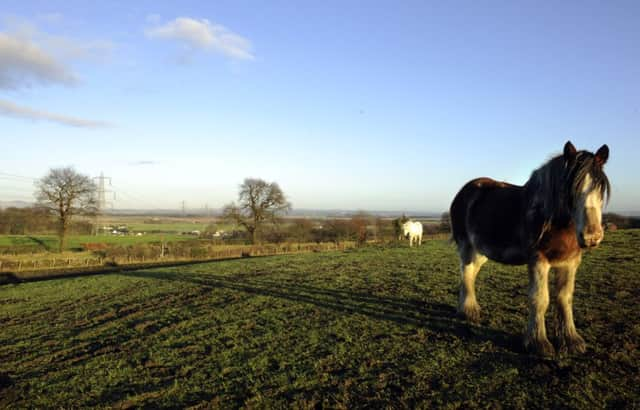National register of land ownership lives on


THE Register of Sasines closes for business today. We celebrate its achievement and we mourn its passing. The Register provided Scotland with the first national system of registration of land ownership, some centuries ahead of other comparable jurisdictions.
The first national register for the whole of Scotland was founded in 1617. It was based on the huge concept that real ownership of land depended not upon physical possession and control or even upon alleged documents of title, but upon the registration or recording of a valid document of title in a national, central register. This rendered pointless the practices of seizing land by violence or of creating forged title deeds.
Advertisement
Hide AdAdvertisement
Hide AdThis in turn brought reliability and potential agriculture and development to the private ownership of land in Scotland. In surprising comparison, the same concept emerged in parts of England only as recently as 1862 on a voluntary basis and was not made generally compulsory until 1990.
Now, however, the Sasines has been supplanted by the new Land Register, introduced in Scotland in 1979, with effect from 1981. This is the same name as the English system which was first introduced in 1862. This gives rise to the possible misunderstanding that Land Registration started in England more than a century before it did so in Scotland.
That is true only in relation to the technical titles of the current registers. The huge concept of a national register of land ownership was realised in Scotland about two and a half centuries earlier than it was in England.
While the Register of Sasines has been a register of documents, the new Land Register is an electronic, map-based register of property titles. This is facilitated by modern mapping techniques using aerial photography and by electronic data storage. These inventions, of course, are mere tweaks in comparison with the invention of the huge concept in 1617.
Moreover, the new system was beset by certain problems which did not affect the Sasines. Its creation inadvertently abolished the law of (heritable) property which has now been belatedly reinstated. Also, such was the administration’s confidence in the new system that it was backed by an unrealistic government guarantee of accuracy which has now been written out of the equation. Whether or not these new rules will improve the position very much remains to be seen.
I may be guilty of feeling some chagrin here. Our own Society proposed, about 100 years ago, a system of registration of title which would have effectively maintained and updated the sasines operation. That system would have been easily amenable to modern mapping and data storage. It would also have retained our historical links to the origins of the sasines.
There are also personal grounds for chagrin. No longer will I be able to thrill generations of law students with fascinating sasines intelligence. The term “sasines” is derived from “seizings” but denotes peaceful transfer rather than the more violent seizing, for example, by violent force.
This sheds interesting light upon and raises the literary standing of certain traditional (Glaswegian?) patois. When one school child says to another “gonnae seize me a slug o your ginger?” the speaker is asking for a drink of his neighbour’s lemonade. Such requests are normally emitted in peaceful contexts and often in barter for compensating benefits such as a read at one’s Beano. They also reflect a true historical and legal meaning of the terminology.
Advertisement
Hide AdAdvertisement
Hide AdThe Sasines may now be closed for business but rumours of its death may be greatly exaggerated. At my last inquiry, a significant portion of Scottish property titles were still in the Sasines rather than the Land Register. Also, a significant part of the land mass of Scotland is unregistered and some of it has not yet reached the Sasines, never mind the Land Register.
When a threat was made some years ago to put up for sale a mountain range on Skye in order to meet death duties, it transpired that there was no sasines title for the property. It seemed that the ownership was derived from a Royal grant, which pre-dated 1617. There may be need for Sasines expertise for some centuries yet.
• Michael Sheridan is secretary of the Scottish Law Agents Society www.scottishlawagents.org